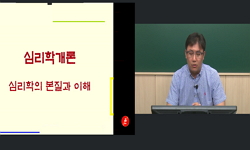본 연구는 주로 기술적으로만 다루어졌던 성인진입기의 심리사회적 특징을 보다 다층적으로 이해하고자 국내 성인진입기의 심리사회적 특징으로 구분되는 이질적인 집단을 탐색하고, 관련...
http://chineseinput.net/에서 pinyin(병음)방식으로 중국어를 변환할 수 있습니다.
변환된 중국어를 복사하여 사용하시면 됩니다.
- 中文 을 입력하시려면 zhongwen을 입력하시고 space를누르시면됩니다.
- 北京 을 입력하시려면 beijing을 입력하시고 space를 누르시면 됩니다.
성인진입기 심리사회적 특징에 따른 잠재프로파일분석 = Latent Profile Analysis on Characteristics of Emerging Adulthood
한글로보기https://www.riss.kr/link?id=T17210896
- 저자
-
발행사항
전주 : 전주대학교 일반대학원, 2025
-
학위논문사항
학위논문(박사) -- 전주대학교 일반대학원 , 상담심리학과 , 2025. 2
-
발행연도
2025
-
작성언어
한국어
- 주제어
-
KDC
183.6 판사항(5)
-
발행국(도시)
전북특별자치도
-
형태사항
iv, 78 p : 삽화, 도표 ; 26cm
-
일반주기명
부록: 설문지
지도교수: 김명식
참고문헌: p. 58-72 -
UCI식별코드
I804:45016-200000877928
- 소장기관
-
0
상세조회 -
0
다운로드
부가정보
국문 초록 (Abstract)
본 연구는 주로 기술적으로만 다루어졌던 성인진입기의 심리사회적 특징을 보다 다층적으로 이해하고자 국내 성인진입기의 심리사회적 특징으로 구분되는 이질적인 집단을 탐색하고, 관련된 심리적 변인들을 확인하고자 하였다. 이를 위해 전국에 거주하는 성인진입기 330명을 대상으로 설문하였고, 적절하지 않다고 판단된 2명을 제외하여 최종 328명을 분석에 사용하였다. 잠재프로파일분석을 실행하였고, 분류의 적절성을 확인하기 위해 3단계 추정방법을 사용하였다. 예측변인으로서 성별, 연령, 안정적인 관계, 학력, 직업, 양육자의 경제적 도움과 같은 인구통계학적 변인과 강화민감성, 조절초점과 같은 자기조절 변인을 사용하였고, 집단에 따라 변인들의 예측에 차이가 나타나는지를 확인하고자 하였다. 결과변인으로서는 우울 및 불안, 사회적 역기능, 진로구성개념을 사용하였고, 집단에 따라 유의미한 차이가 있는지를 살펴보고자 하였다. 그 결과, 총 5개의 집단이 추출되었으며 각 집단의 특징에 따라 성취집단, 안정집단, 혼미집단, 유실집단, 유예집단으로 명명되었다. 인구통계학적 변인과 자기조절 변인은 잠재집단을 구분하는데 유용한 예측변인으로 나타났으며 일부 집단에서 우울 및 불안, 사회적 역기능, 진로구성에 유의미한 차이가 있는 것을 확인하였다. 이로써 정체성 지위를 통해 잠재집단을 분류하고 성인진입기의 환경적 요인과 자기조절적 변인과의 상호작용을 통해 성인진입기의 독특한 심리사회적 특징을 확인할 수 있었다. 마지막으로 본 연구의 한계점을 제시하였다.
다국어 초록 (Multilingual Abstract)
This study investigated a more multifaceted understanding of the psychosocial characteristics of emerging adulthood, which have predominantly been addressed in descriptive terms. Additionally, it sought to identify distinct groups characterized by the...
This study investigated a more multifaceted understanding of the psychosocial characteristics of emerging adulthood, which have predominantly been addressed in descriptive terms. Additionally, it sought to identify distinct groups characterized by the psychosocial features of emerging adulthood in Korea and examine related psychological variables. A survey was conducted with 330 individuals in emerging adulthood residing nationwide, and after excluding two participants deemed unsuitable, a final sample of 328 was analyzed. Latent profile analysis (LPA) was conducted to classify the latent groups, and the three-step estimation method used to assess the validity of the classification. Demographic variables including gender, age, stable relationships, education level, employment, and financial support from caregivers, along with self-regulation variables including reinforcement sensitivity systems and regulatory focus, were predictors to evaluate whether these variables differed from other groups or not. Additionally, outcome variables such as depression, anxiety, social dysfunction, and career construction were analyzed to testify the statistically significant differences between groups. Five groups were identified and labeled based on their characteristics as follows: the Achievement Group, Stability Group, Diffusion Group, Foreclosure Group, and Moratorium Group. Demographic and self-regulation variables were found to be useful predictors classifying latent groups. Furthermore, there were statistically significant group differences in depression, anxiety, social dysfunction, and career construct. By examining the interactions between environmental factors and self-regulation variables during emerging adulthood, latent groups were classified based on identity status, and the unique psychosocial characteristics of this developmental stage were identified. Finally, the limitations of the study were discussed.
목차 (Table of Contents)
- Ⅰ. 서론 --------------------------------------------------------- 1
- 1. 연구의 필요성 및 목적 --------------------------------------- 1
- 2. 연구문제 및 모형 -------------------------------------------- 6
- Ⅱ. 이론적 배경 -------------------------------------------------- 8
- Ⅰ. 서론 --------------------------------------------------------- 1
- 1. 연구의 필요성 및 목적 --------------------------------------- 1
- 2. 연구문제 및 모형 -------------------------------------------- 6
- Ⅱ. 이론적 배경 -------------------------------------------------- 8
- 1. 성인진입기 -------------------------------------------------- 8
- 1.1 성인진입기의 심리사회적 특징 ----------------------------- 8
- 1.2. 성인진입기의 심리사회적 특징과 정체성 발달 ------------- 10
- 2. 성인진입기의 인구통계학적 변인 ----------------------------- 12
- 3. 자기조절 이론 ---------------------------------------------- 13
- 3.1. 강화민감성이론과 조절초점이론 -------------------------- 13
- 3.2. 성인진입기와 자기조절 ---------------------------------- 14
- 3.3. 강화민감성이론 ----------------------------------------- 15
- 3.4. 성인진입기와 강화민감성이론 ---------------------------- 16
- 3.5. 조절초점이론 ------------------------------------------- 17
- 3.6. 성인진입기와 조절초점이론 ------------------------------ 18
- 4. 우울 및 불안과 사회적 역기능 ------------------------------- 20
- 5. 진로구성개념 ----------------------------------------------- 21
- Ⅲ. 연구방법 ---------------------------------------------------- 24
- 1. 연구대상자 ------------------------------------------------- 24
- 2. 연구 절차 -------------------------------------------------- 26
- 3. 연구 도구 -------------------------------------------------- 27
- 3.1. 한국판 성인진입기 척도 --------------------------------- 27
- 3.2. 한국판 Jackson-5 척도 ---------------------------------- 28
- 3.3. 한국판 조절초점 척도 ----------------------------------- 29
- 3.4. 한국판 일반건강 설문지 --------------------------------- 30
- 3.5. 한국판 학생 진로구성척도 ------------------------------- 31
- 4. 자료 분석 -------------------------------------------------- 32
- Ⅳ. 결과 -------------------------------------------------------- 34
- 1. 주요 변인들의 기술통계 및 상관분석 ------------------------- 34
- 2. 성인진입기 심리사회적 특징에 따른 잠재계층 수 결정 -------- 36
- 3. 성인진입기 심리사회적 특징에 따른 잠재프로파일 형태 -------- 37
- 4. 성인진입기 잠재프로파일과 예측변인 간의 관계 --------------- 40
- 5. 성인진입기 잠재집단에 간 일반건강과 진로구성개념의 차이 ---- 49
- Ⅴ. 논의 -------------------------------------------------------- 51
- 참고문헌 ------------------------------------------------------- 58
- ※ 부록 -------------------------------------------------------- 73
- Abstract -------------------------------------------------------- 78












